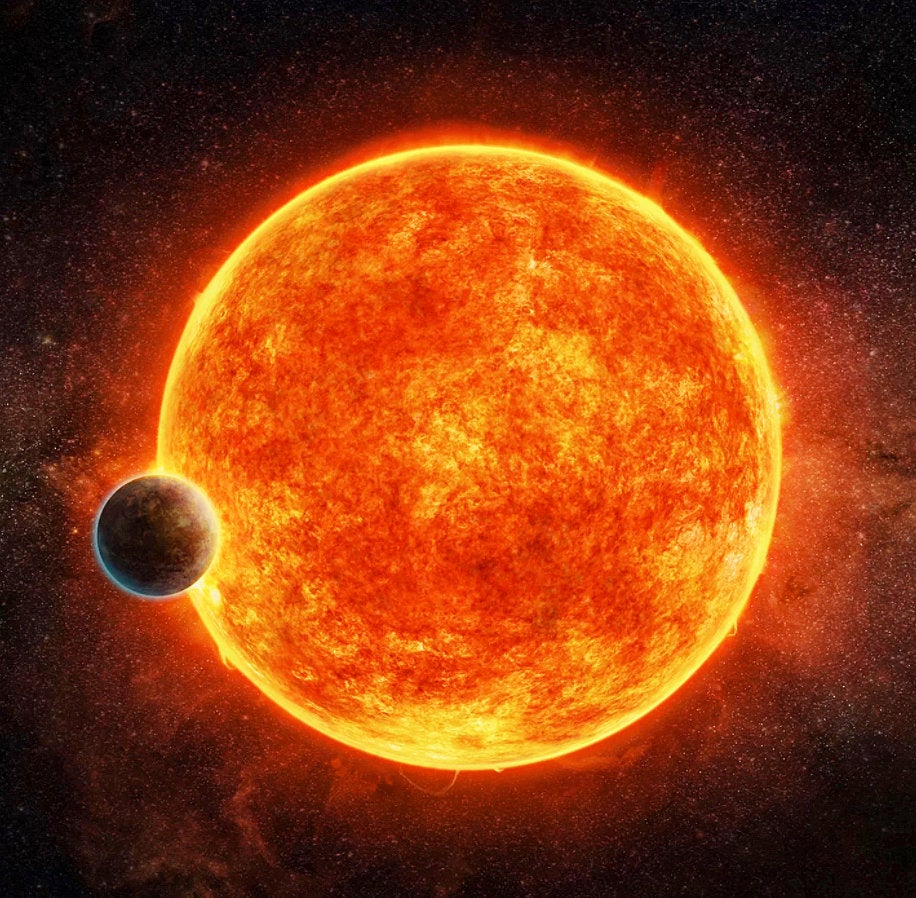An umbrella won't do you much good on this strange Jupiter-like space object.
Scientists have determined the weather patterns on PSO J318.5-22 -- a mysterious 20 million-year-old object that does not orbit any star but rather floats freely -- and it turns out that the forecast is pretty extreme.
Based on data from the European Southern Observatory’s Very Large Telescope in Chile, researchers from the University of Edinburgh in Scotland have determined that the orphan world's climate consists of thick clouds of hot dust and droplets of molten iron rain. Their study was published Oct. 30 in The Astrophysical Journal.
"These are likely hot silicates and iron droplet clouds," Dr. Beth Biller, lead author of the research and a chancellor's fellow at the university's Institute for Astronomy at the School of Physics and Astronomy, told New Scientist. "This makes Venus look like a nice place."
PSO J318.5-22, which is similar to a brown dwarf star and sits some 75 light-years from Earth, was discovered in 2013. The weird world is around the same size as Jupiter, but has roughly eight times the mass -- though it's not massive enough to initiate nuclear fusion in its core like a star would, so it glows feebly.
To observe the object, the researchers took hundreds of infrared images of PSO J318.55 over time.
"What we did was to observe the object over a period of 5 hours or so in the infrared," Biller told The Huffington Post in an email. "We were able to measure whether the brightness of the object was changing relative to other objects in the field. So as it rotates, different cloud patches (potentially with different temperatures or cloud structures) rotate in and out of our field of view."
The researchers analyzed the different cloud patches, allowing them to determine weather patterns. They noted that this type of analysis would not have been possible had PSO J318.5-22 orbited a mother star, as most planets and similar objects do.
The researchers hope to adapt the infrared-imaging technique to study planets that do orbit stars, Biller said.
"Obviously, this is much harder because then you have to overcome the glare of the parent star to even see the planet in the first place," she said, "whereas PSO J318.5-22 is isolated and easy to image."

Scientists still aren't sure why PSO J318.5-22 is isolated and free-floating in space, but according to Biller, there are two theories. PSO J318.5-22 may have formed as a planet around a star and got ejected from that system, or it formed in isolation, condensing out of a star-forming cloud, similar to how brown dwarfs form.
Either way, "this discovery shows just how ubiquitous clouds are in planets and planet-like objects," Biller said in a written statement. "Eventually we hope to detect weather in Earth-like exoplanets that may harbor life."
CORRECTION: An earlier version of this story incorrectly stated that the University of Edinburgh was located in England. It is located in Scotland.
Also on HuffPost:

